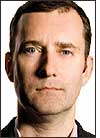Oct 01, 2007At the end of June, hundreds of people met in Berlin to discuss ways to make the European Union an economic center for RFID. They are not the only ones interested in pur-suing this path. In the past few years, I have met government officials from places as far apart as China, Scotland, Korea, Finland, Australia, North Dakota and the Faroe Is-lands, all looking for ways to make their part of the world a lucrative hub of RFID activity.
Why? Several areas have achieved economic growth by becoming an early global base for a particular emerging technology—most notably, Japan's Honshu Island for transistors and the San Francisco Bay Area's Silicon Valley for integrated circuits. In both cases, early dominance in a fundamental technology created and sustained a thriving industry, not just for the technologies themselves but also for related products and services—televisions, radios and DVD players on Honshu, and software, servers and search engines in Silicon Valley. These focused economic areas are often called "clusters." Becoming a cluster in the next fundamental emerging technology—RFID and its spinoffs—could, in theory, make a place rich.
Many government officials looking to make their region, nation or city an RFID cluster arrive at the same answer: Lure RFID startups to the area by providing a package of tax breaks and other incentives to encourage companies to open offices and factories. But the money to build facilities comes with strings—this many local employees, this many years and so on—and most technology startups are too small to handle the red tape associated with these kind of deals. So a couple of companies move in, a few press releases are issued and not much else happens.
A better way to build an RFID cluster is to follow the model that made Honshu and Sili-con Valley so successful. First, governments should invest aggressively in homegrown research. Give lots of grant money to local universities to set up or support RFID labs—enough to attract high-quality faculty and students. Second, become a big-spending, early adopter of the technology. The U.S. government was almost the only customer for integrated circuits in their early years, using them for ambitious military projects and NASA's space program, and selecting them even when older alternative technologies may well have done the job. Last, and most important, provide incentives for local companies to use the new technology. Instead of giving tax breaks to vendors, give them to users.
This approach will attract the world's RFID startups in swarms. What small companies are most hungry for are not lower taxes or cheaper office space—it's customers and revenue. Brilliant minds will graduate from those RFID labs at the local universities, and they'll find plenty of opportunities to stay in town. They will join existing vendors, launch their own RFID startups or become star employees at end-user companies. Best of all, the area will become a sophisticated early adopter of RFID technology.
The economic benefits of creating a vendor cluster are big, but the economic advantages of building one that also has leading end users are bigger. A true RFID cluster will not just be good at making RFID technology—it will also excel at using it.
Kevin Ashton was cofounder and executive director of the Auto-ID Center.

